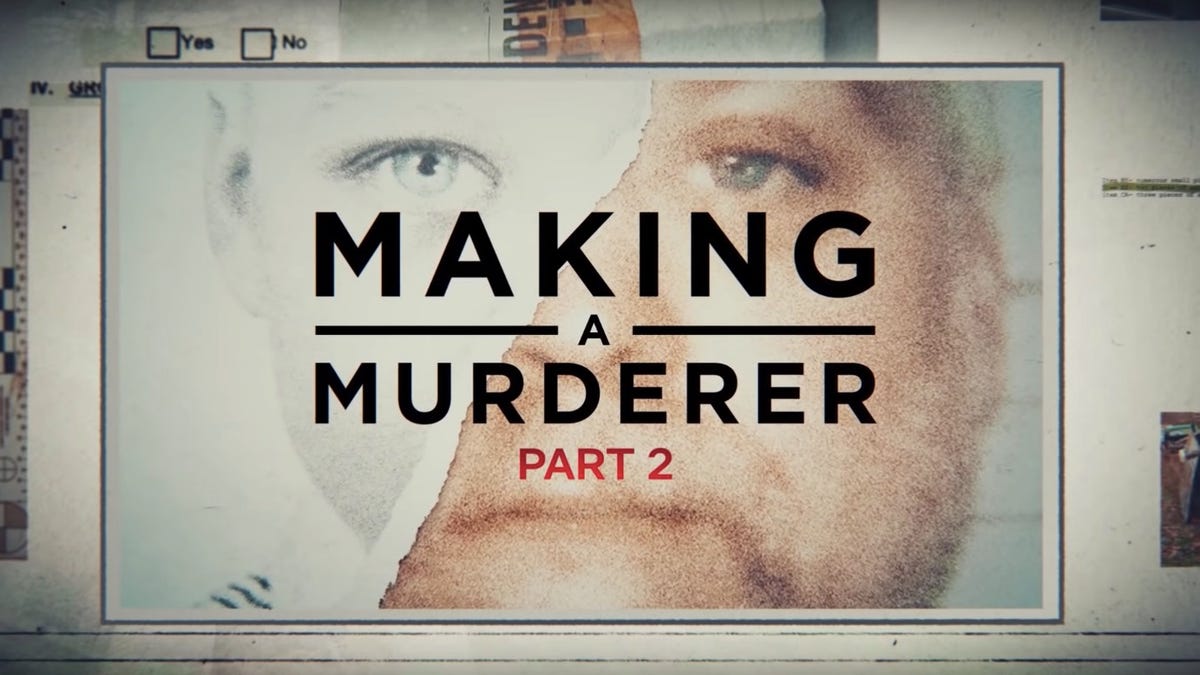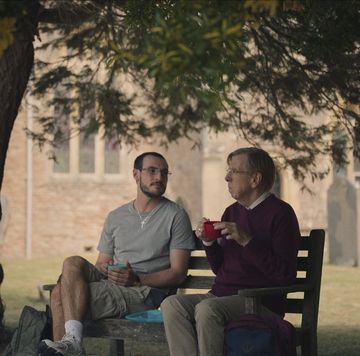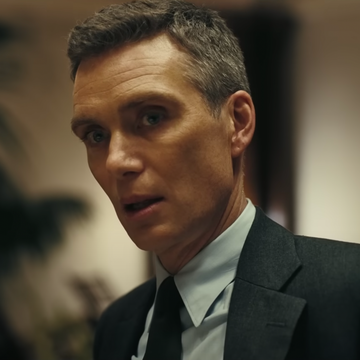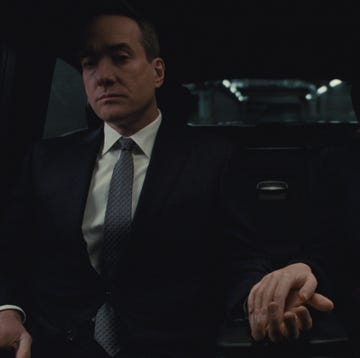The second helping of Making a Murderer has got us all theorising and asking questions, once again, about Steven Avery and the trial that saw him convicted of the murder of Teresa Halbach.
It's been over ten years since he was sentenced to life in prison for the crime, and yet there are still new revelations emerging today.
There are those who believe the 20-part documentary series, which now has two parts, presents a biased view. And there's also been a lot of talk surrounding 'missing' information.
Here, we're going to explore some of these themes and how, if at all, they were presented on film.
1. Prosecutors actually attempted to stop the Netflix documentary from being made
It was hardly a surprise to find out the State's camp weren't impressed by the contents of the true-crime docu-series, what with it largely showing them in a bad light.
But following the release of Part 1, filmmakers Laura Ricciardi and Moira Demos revealed that the prosecution had actually attempted to halt their project by serving them a subpoena.
"[Former Calumet County District Attorney] Ken Kratz was alleging in [the subpoena that we were] acting as an investigative arm of the defence," Riccardi explained to IndieWire (via The Independent). "So we brought the motion to quash the subpoena, refuting Mr Kratz's accusations as baseless."
This order to bring them to court was based on the belief that they might have found evidence relating to the case, although they maintained that they were "not trying to investigate the Halbach case in any way".
Kratz also stated as part of the subpoena that he wanted access to every recorded conversation with Avery. But as every phone call out of prison is recorded by the State anyway, he actually already had access to this.
"When considering that, it's interesting because then you think, 'Okay, what's really the real reason behind the subpoena?'
"Getting the subpoena felt like hostility coming toward us," Ricciardi said.
These particular legal struggles did not feature in the first ten episodes, but it's interesting to note that we might not have got a finished product.
2. The evidence that was left out, according to Kratz
By now you've probably heard plenty of allegations that 'key evidence' was omitted from the documentary – and nobody has said more on this than (yes, you guessed it) Ken Kratz.
After Part 1 first hit the streaming service in 2015, he gave a series of interviews claiming that it was 'biased', he argued that the film "presents misinformation", and he also stated that certain 'facts' of the case were left out.
He reeled off a number of pieces of information that he says further incriminated Avery, such as the now-notorious "sweat DNA" found on the car's hood (something that has now been called into question by Kathleen Zellner's experts) and the idea that Avery had dialled Halbach from a withheld number earlier that day.
During Part 2 of the series, Avery's new lawyer said: "I think that it's really unprecedented that Mr Kratz, in 2017, is still on some type of active character-assassination tour."
She added that Kratz had "certainly gone from being just in incredibly bad taste to doing things that are unethical", claiming that his words could be seen as "interfering in Mr Avery's efforts to have a court re-examine constitutional violations."
Naturally, with the release of Part 2, Kratz (who stepped down as DA following allegations of sexual harassment in 2010) has once again had his say – this time levelling his criticism at Zellner's new evidence.
In recent conversation with USA Today Network – Wisconsin (via Newsweek), he was asked, once again, if he thought the series was balanced.
"Of course not," he said. "The audience is never told that attorney Zellner's 'new evidence' was little more than junk science, with its results having so little relevance to the contested issues that the court rejected them without even needing an evidentiary hearing."
3. Previous allegations against Avery
Another criticism levelled at the documentary centres on past allegations against Avery.
In an email to The Wrap, Kratz asked viewers to remember Steven's past incident with a cat. "He soaked his cat in gasoline or oil, and put it on a fire to watch it suffer," he alleged.
This was touched on in the beginning of the Making a Murderer documentary, but Kratz has argued that Avery painted a different version of events.
During an interview in the very first episode, Steven said that he had been "fooling around with the cat" and later "tossed him over the fire". He said that he had been "young and stupid".
Avery was open about his criminal record, listing two burglaries, which he says he carried out with friends, alongside the animal cruelty case.
But Kratz has also brought attention to previous sexual assault allegations, which Avery was never actually prosecuted for.
This was acknowledged by his new lawyer in Part 2. "[Kratz is] talking about crimes that he wishes Steven Avery had been charged and convicted of. But he wasn't," Zellner said. "And I think it is going to come back to haunt him."
4. They found fingerprints in the RAV4
One thing that the prosecution and the defence agree on is the fact that Steven Avery's blood was found in Halbach's Toyota RAV4.
What they disagree on, however, is how it came to be there.
During the original trial, the State argued that the finding of blood pointed towards Avery's guilt by linking him to the crime.
But the defence have always maintained that this evidence was planted. Avery's original defence team, Dean Strang and Jerry Buting, theorised that a vial of Avery's blood in storage had been tampered with to provide fake evidence, whilst Zellner has followed new leads and found that the blood could have been taken from the bathroom sink in Avery's trailer.
What we weren't presented with in the documentary, however, was the fact that the car has since been tested for fingerprints.
"There were eight sets of latent prints that were unidentified," Kathleen Zellner has recently tweeted. "However, the prints ruled out Steven and Brendan."
5. The coroner's testimony
This part of the story was not told in Part 1 of the documentary, but the coroner's name started to pop up in Reddit threads shortly after its release.
Debra Kakatsch was the Manitowoc County Coroner from 1993 to 2007. Not only had she been banned from the crime scene (where Teresa Halbach's remains were found) but she was also not allowed to testify to this in front of the jury.
All of this was left out of the original 10-part documentary. But she finally got her say in the final episode of Part 2.
Debra told the camera that she first found out about the discoveries on the Avery property from a press conference on the television. "Prior to that I had no knowledge or reports," she said.
She called Detective Wiegert later that day, who said he had "overlooked" calling her. Debra said that she wanted to go out to the scene, but was told that it was closed for the night.
A coroner or medical examiner should always be notified when a body or remains are found, according to the law. It is their job to handle the medical forensics. So, why was protocol not adhered to in this case?
It soon became quite clear that Debra was being shut out of the investigation, and she later described how she was told she'd be "arrested" if she interfered.
At the time she was told that her involvement would be a conflict of interest due to Avery's previous conviction, but she never had any involvement in that case or the civil law suit that followed.
The Manitowoc County police stood back from the investigation to prevent the same accusation – Avery was, after all, suing them for $36 million at the time – but officers did seem to keep popping up at the crime scene.
"I was never allowed to do my job," Kakatsch said. She resigned from her position soon after.
Making a Murderer Part 1 and Part 2 is now streaming on Netflix.














